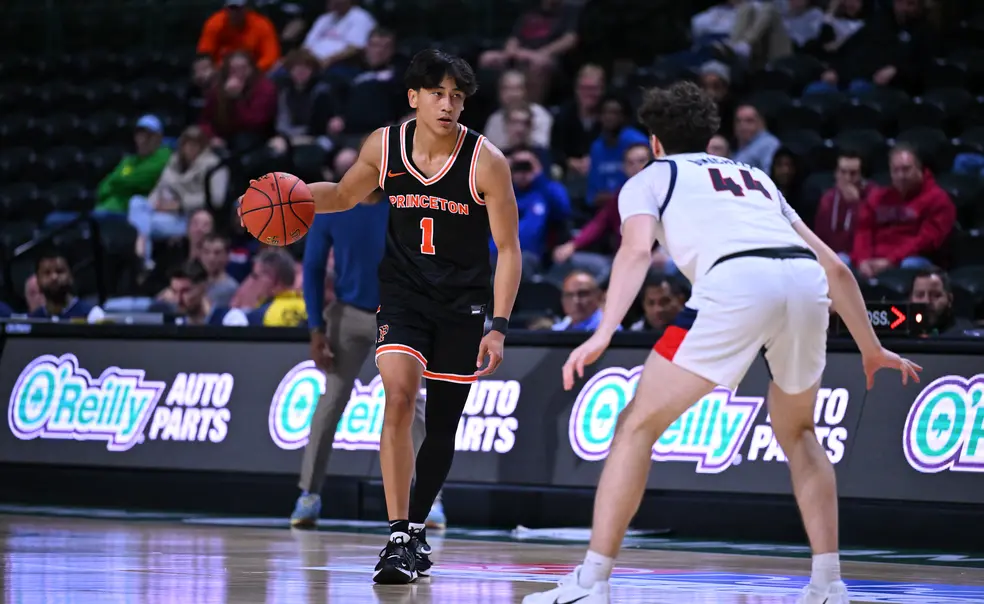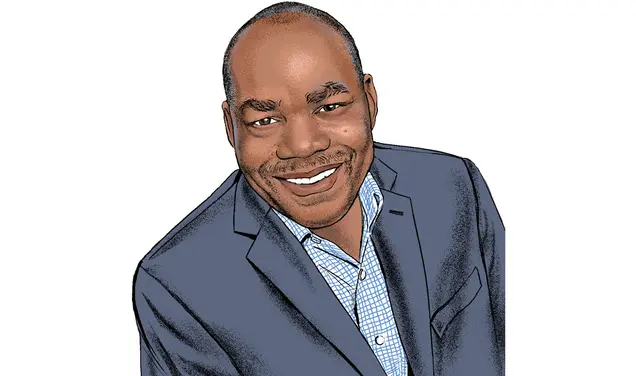Does Xaivian Lee ’26’s Departure Signal an Ivy Transfer Trend?
Lee, the Tigers’ top scorer in the last two seasons, is transferring to Florida
In the last two years, as men’s basketball stars from Yale, Harvard, and Penn left the Ivy League for the bright lights and big paydays of the game’s power conferences, Princeton managed to keep its lineup intact.
That run ended in April when Xaivian Lee ’26, an All-Ivy point guard and the Tigers’ top scorer in the last two seasons, announced he was transferring to Florida. Lee, who declared for the NBA Draft in 2024 before withdrawing his name and returning for his junior year, will likely be a starter for the defending NCAA champions. He told The Daily Princetonian he was “nothing but grateful” for his time at Princeton, but that he was “chasing a larger goal.”
Lee may be just one player, but his departure served as a vivid reminder that Princeton is not immune to the changes reshaping college sports. In May, the women’s basketball team lost 6-foot-4 center Tabitha Amanze ’26, who transferred to Virginia, and men’s guard Jack Scott ’26 left for Duke.
Longtime Ivy observers are not surprised that the league’s players are in demand. They also feel for the coaches as they try to attract and develop players who’ll have an impact but also stay four years. “It must be a peculiar time to be an Ivy League coach on the recruiting trail,” said Jon Solomon, who spent 15 years covering the Tigers at princetonbasketball.com.
Relatively few players have transferred out of the league, which may demonstrate uncommon stability. “When it comes to the transfer portal, it could be a lot worse for the Ivy League than it has been so far,” said Steve Silverman ’83, who covers college basketball as a freelance writer for Ivy Hoops Online and The Next. “In some ways, the Ivy League has a built-in advantage because the benefits of an Ivy League degree are greater.”
The NCAA changed its transfer rules in 2021, eliminating the requirement that players sit out a full year after leaving one Division I school for another. That freedom of movement, coupled with the ability to compensate athletes for their name, image, and likeness (NIL), shifted the way many programs assemble their rosters. Front Office Sports reported this April that the number of men’s basketball players entering the portal topped 2,000 for the second straight season; on the women’s side, more than 1,300 players were officially considering changing schools.
The Ivy’s high-profile defections began in 2023, when Penn’s Jordan Dingle, the Player of the Year, traveled up I-95 to play at St. John’s. In 2024, All-Ivy center Danny Wolf left Yale for Michigan, and Malik Mack, the league’s Rookie of the Year, departed Harvard for Georgetown. All three became starters and significant contributors for their new teams.
Lawrence Schuler ’07 *12, a high school coach in New Jersey, onetime manager for the Princeton men’s team, and former co-host of the Ivy League Hoops Hour podcast, said that Ivy teams show their quality when they beat power conference teams. In the transfer portal, he sees a similar kind of validation.
“We watch Ivy basketball, we love it, and we can see that the players are top-level players,” Schuler said. “But if we want respect from around the country, our players need to go play for [power conference teams].”
The Ivy League “is not oriented toward rapid change,” Silverman said, for better or worse. In basketball, the league has evolved, adding a postseason tournament in 2017 and revising its regular season schedule to reduce the number of games on back-to-back nights. But in other ways, the Ivy still stands apart, with no athletic scholarships and no eligibility for graduate students. The league’s stance on NIL has been generally open, though it has not embraced the “collectives” that many schools use to direct money to athletes.
President Christopher Eisgruber ’83 addressed the evolving approaches to NIL in his September 2024 PAW President’s Page, writing that any model in which universities pay athletes directly would be “a nonstarter” for Princeton.
But for future Tigers who, like Lee, have NBA aspirations, transfer offers from the schools that embrace those models might be too tempting to pass up.












3 Responses
Narendra Rocherolle ’91
6 Months AgoDetails on NIL Pay?
Can we not get some insight into the financials? Clearly, he must be getting paid well to start for a defending national champion. Would be great to know what those economics look like.
Doug Weil ’58
6 Months AgoWhat’s a Year at Florida Worth?
Probably between $500,000 and $1 million plus a sneaker deal based on other known compensation.
Jim Merritt ’66
6 Months AgoXaivian Lee’s Departure to Florida
I understand and respect Lee’s decision to leave Princeton for Florida. But am still disappointed. If the opportunity had existed in 1964, could anyone imagine Bill Bradley ’65 doing the same? On the other hand, Lee’s probable status as Florida’s starting point guard will give me another team to follow closely.